Project DNA by Catherine Wales
These 3D-printed accessories by London fashion designer Catherine Wales can be ordered to fit any body shape and printed on demand (+ slideshow).
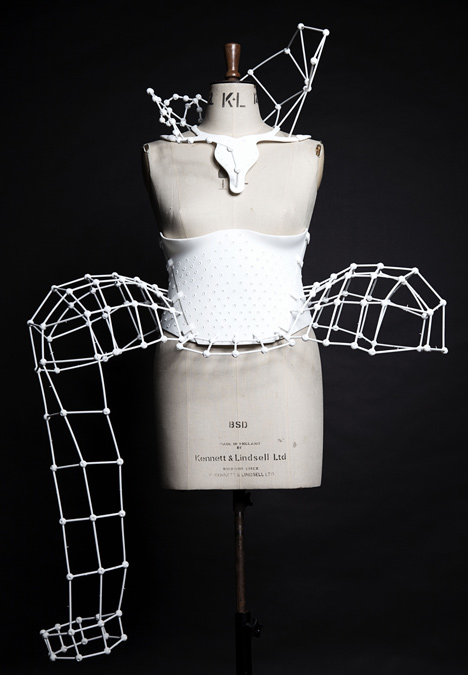
Wales creates a digital avatar of the prospective wearer using a 3D scanner so each piece can be custom designed and built specifically for their body shape.

"[The idea] started with a message to the industry that we don't need size labels in our garments," Wales told Dezeen. "I felt that the fashion industry needed to integrate more techonology to reflect where society was going."

The Project DNA collection includes a corset with perforations across the bodice to hold elements resembling scaffolding, which connect to spherical joints that can be added to and altered. "I used my pattern-cutting knowledge to change form and accentuate or reduce parts of the body," said Wales.
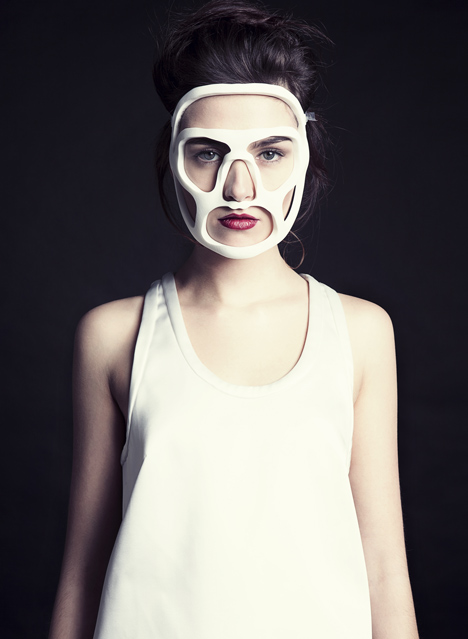
A shoulder piece designed to emulate plumage and a mask that frames sections of the face also feature in the range. She created the attire using a combination of engineering programs to model complicated joints and creative software to build the sculptural forms.
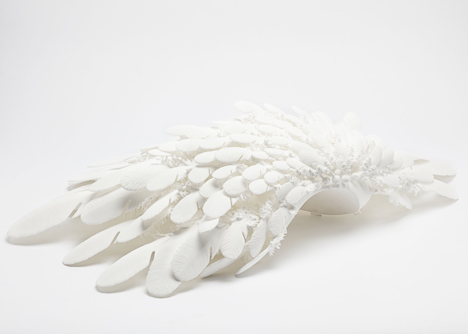
Local studio Digits2Widgets provided the equipment to laser sinter the pieces from nylon, which Wales used because "all the joints needed to be flexible."
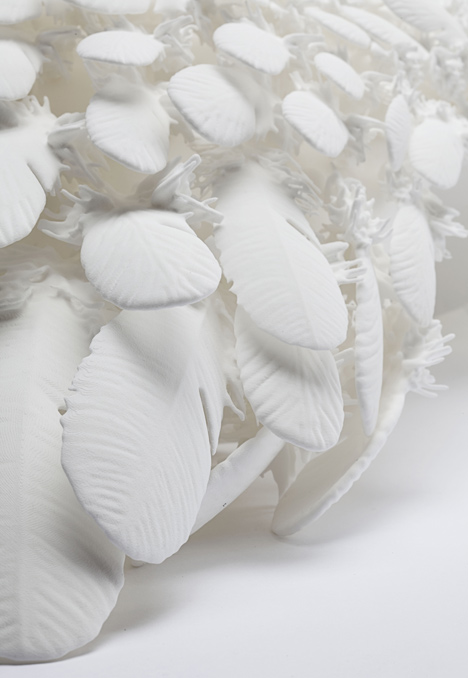
The corset, shoulder adornment and horn mask are on display as part of an exhibition with 3D-printing platform Ground3D at the MoBA fashion biennale in Arnhem, the Netherlands. The event is curated by trend forecaster Li Edelkoort and themed Fetishism in Fashion, which continues until 21 July.
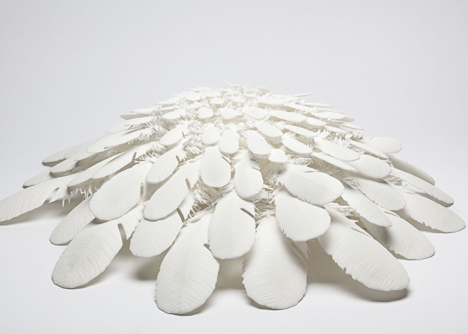
"Corsets have been used in that area for centuries," Wales states. "Restricting and changing the shape of the body through these accessories all fits in with the fetishism theme."
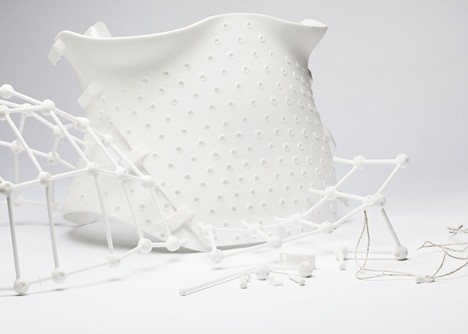
Earlier today we published a round-up of digital fashion on Dezeen, which includes dresses that squirm when they're stared at and 3D-printed garments by Iris van Herpen.

Van Herpen spoke to us about how 3D printing is revolutionising the fashion industry in an interview for our print-on-demand magazine Print Shift, predicting that "everybody could have their own body scanned and just order clothes that fit perfectly."
Photography is by Christine Kreiselmaier.
See more digital fashion »
See more 3D printing projects »
See all fashion design »
More information from the designer follows:
Project DNA is the three-dimensional accessories collection from London-based designer, Catherine Wales. At the helm of the world’s third industrial revolution, Catherine’s debut offering cross-pollinates high fashion, technology and science to re-evaluate conventional methods of garment construction and push the boundaries of digital fabrication within the luxury market.

Inspired by identity and the visual structure of human chromosomes, Project DNA is created almost entirely with individual and interchangeable ball and socket components that allow it to be built in a number of directions. Produced using white nylon with a 3D printer, the eight-piece collection encompasses a scaffolded corset, a blossoming feathered shoulder piece and a waist bracelet complemented by four transformative headpieces that hide key areas of the face; including a guilded horn and a mirrored mask, and a cut out visor helmet.
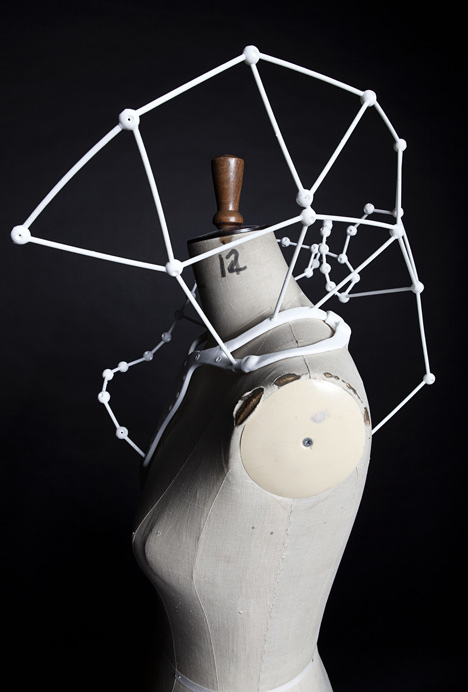
Catherine’s futuristic collection is completely unique and can be used both editorially to stimulate conceptual thinking and scientifically to develop the capabilities of luxury fashion prototyping within the 3D space.
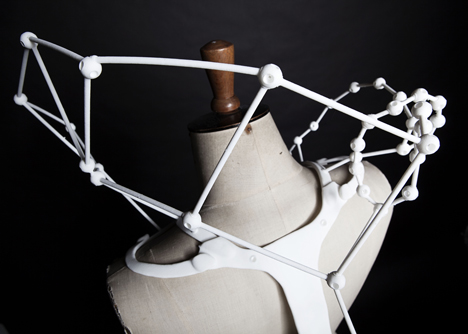
As an expert pattern cutter, Catherine originally approached Project DNA with a view to sustainably solve the current complications surrounding garment sizing and manufacturing restrictions. In this way, the collection embraces technological developments in order to cut down wastage and better support consumer demand.
Designs can be ordered and printed on demand.